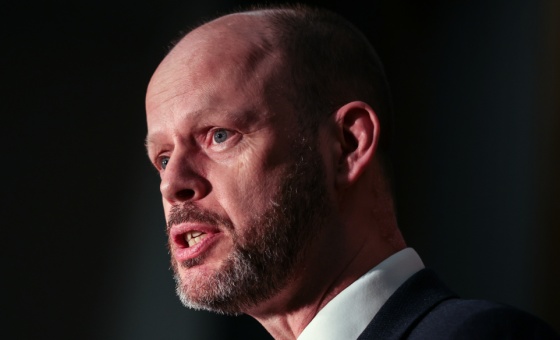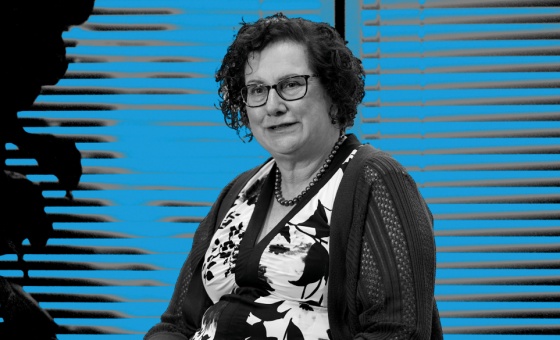This is the last article you can read this month
You can read more article this month
You can read more articles this month
Sorry your limit is up for this month
Reset on:
Please help support the Morning Star by subscribing here
NEWS that the number of children in care in England could reach almost 100,000 by 2025, comes in timely fashion after November’s latest Children in Need appeal.
The harsh reality on the front line of Tory cuts and privatisation will cut through the glitzy, celebrity-saturated telethon, which has seen the amount raised on the night drop every year since 2016.
New county council research reveals that the projected number of children in care would represent a 36 per cent rise since the Tories came to power.
The rising number is already putting unprecedented pressure on local authority budgets with hard-working, low-paid staff left feeling overwhelmed, resigning due to ill-health caused by stress and leaving councils with high vacancy rates.
The Tory chairman of the County Councils Network (CCN), Tim Oliver, says too many vulnerable children are being placed in what he calls “expensive residential care settings” and on average they are staying in the care system for longer.
Taking a child into care is the most serious and expensive decision a local authority has to make.
Putting up a child in a children’s home costs more than £4,000 per week on average in England.
The latest Ofsted data on the biggest independent sector providers in England shows a slow and steady increase in private investment in children’s services.
There have been concerns about high levels of profit-making, particularly among fast-growing groups backed by private equity or floated on the stockmarket.
Research commissioned by the Local Government Association (LGA) found council spending on children’s residential and fostering placements with independent providers increased by more than £2 billion over the past two years.
The research by Revolution Consulting, published this summer, found the largest 20 providers have an income of £1.58bn and had made £278 million in profit.
The LGA described the findings as very concerning. Earlier this year, the chair of the independent review of children’s social care in England, Josh MacAlister, said profiteering from the sector was “indefensible.”
Local authorities, which run just 14 per cent of children’s homes, had the highest proportion rated outstanding at 22 per cent, according to Ofsted inspectors recently.
The 21 largest companies own 880 homes, 38 per cent of all private children’s homes. The top 10 account for a third of all private children’s homes and the largest company CareTech Holdings accounts for almost 10 per cent.
In addition, the seven largest Independent Fostering Agencies (IFA), account for 61 per cent of all private IFA places, 21,600 out of 35,600.
Ofsted’s national director for social care and regulation Yvette Stanley said recently: “The increasing market share of large providers does raise some concerns, particularly if companies run into trouble.
“The loss of a big provider could leave major gaps in supply, which would cause serious problems in a system already creaking under pressure with too few placements to go round.
“There is an ongoing and much-needed debate about whether the ‘market’ as it stands is really working for children.”
Safeguards that exist for adults when a provider fails are not there for children. If an adult care home closes without planning, the local authority is required to step in to keep the service running while alternative arrangements are made.
In adult social care the Care Quality Commission has oversight of the viability of large providers, but these protections aren’t in place for children.
New regulations have allowed companies such as G4S, Serco and Virgin Care to legally bid for work within children’s social services once they create a not-for-profit subsidiary company.
The original private-sector company would be able to charge the subsidiary for costs, therefore garnering profit from children’s services.
With cuts in funding, local authorities are struggling to fulfill their statutory duties to ensure child protection and other children’s social services are fit for purpose. The fear is that cuts may force them to go with cheaper alternatives, such as external bidding companies.
It’s the old trick of running down state-owned and run services so that complaints, failures and headline-grabbing incidents pave the way for privateers to swoop down like vultures.
There is also added concern that private-sector companies would use their not-for-profit subsidiaries to place children in care that was beneficial to them financially, rather than what was best for the child’s development.
In recent years outsourcing to private children’s homes rose 8 per cent to 67 per cent, causing one City slicker advising private capital investors that there were rich pickings to be had “encouraged by capital shortages,” and this “momentum still has some way to run.”
Privatising children’s care will mark another step on the road to a new Poor Law, with state institutions and practices overwhelmed by the most intractable, complex and labour-intensive work and reduced to negligent care.
The long-term consequences for social policy will be disastrous, cheating a generation of working-class children of good-quality state provision and leading to deprived areas becoming even more socially excluded.










